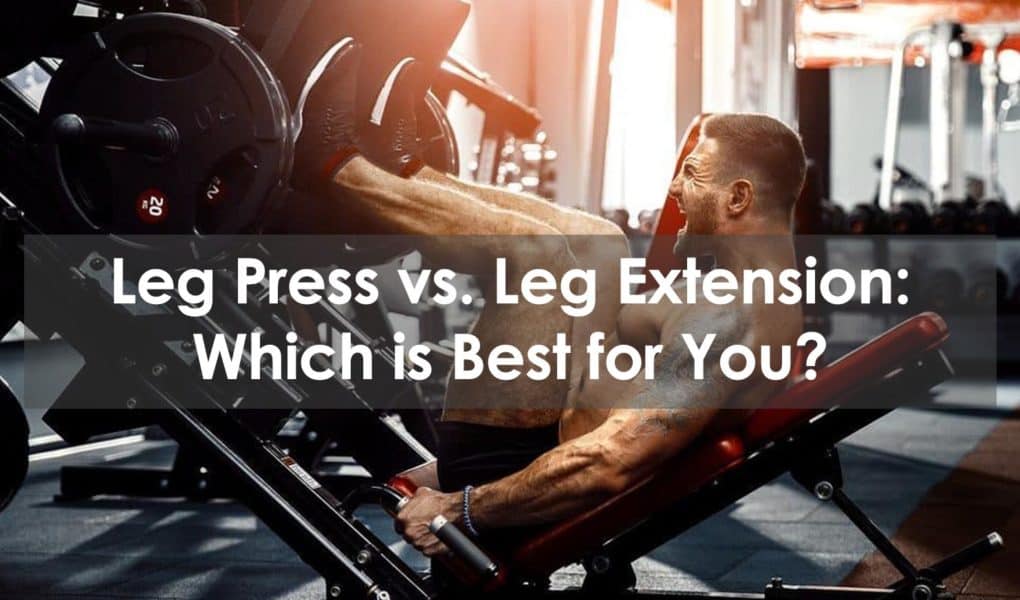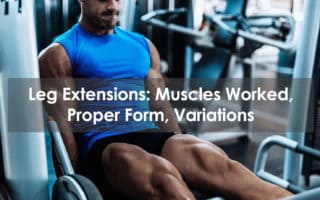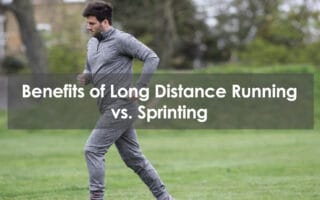Its leg day, and if you’re like most people, you’re dreading it. My entire life, I’ve struggled with a big upper body and skinny little legs (strong though).
One of the biggest dilemmas when building strong legs is the number of machines there are to choose from, and secondly, the amount of exercises to choose from is endless.
So how do you know which exercises are right for you, and how do you know which machines to use?.
This article will take a deep dive into two of the most well-known leg exercises, leg press vs. leg extension. Both of these movements work the leg muscles in different ways. Personal factors such as fitness level, injury, rehabilitation, goals, sports, and other variables, will all determine which exercise is right for you.
The Leg Press
Leg Press Movement:
When performing the leg press, it is vitally important to be conscious of your butt’s positioning in the seat. Unfortunately, this is where the vast majority of injuries occur, users trying to lift too heavy, and therefore, they lose awareness of correct form and technique while performing the movement.
In actual fact, there are a variety of leg press machines that you will find in gyms today, but when it comes to the traditional leg press, the machine we are really referring to is the 45-degree leg press.
The leg press is most commonly used in training programs for developing a strong foundational base. This is not the case for everyone, though; whether or not you should implement the leg press in your training program depends greatly on your goals, injuries, and physical limits.
Most people believe the leg press takes the pressure off the lower back, which is true if your butt positioning is spot on and you are maintaining awareness. When your butt comes up off the seat toward the bottom part of the movement, you are causing a great deal of stress on the lower back; this is referred to as spinal flexion.
Another critical technical factor to be aware of is keeping your head and neck pressed up against the bench during the entire movement. Arching your head and neck forward in the effort to push bigger weights will definitely lead to cervical and thoracic spine issues in the future.
Keep your head, neck, and back flat against the bench pad at all times; this will help prevent injury.
Muscles Used:
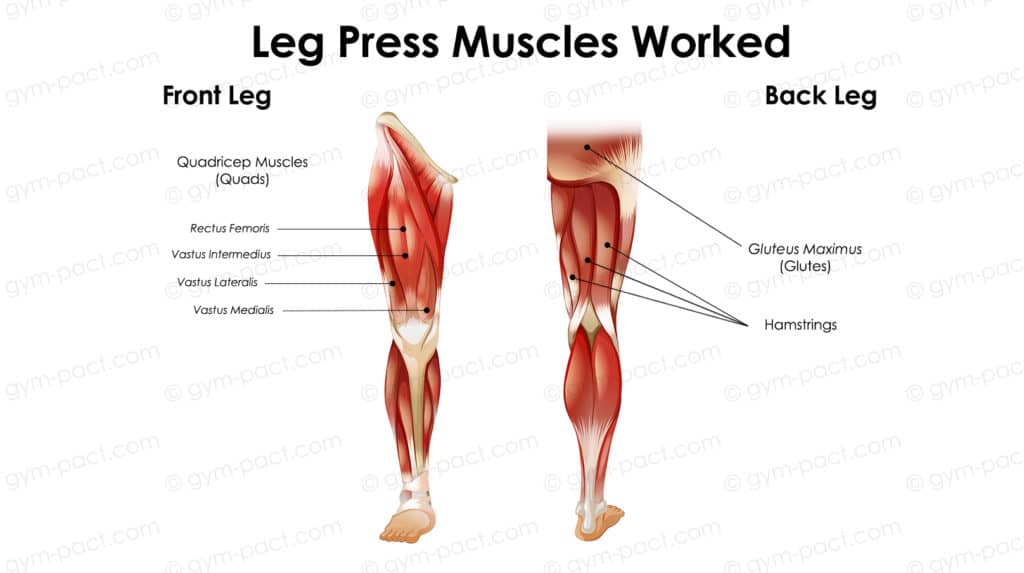
When discussing the primary muscle groups used during the leg press, it’s vitally important we understand the role biomechanics plays in limiting the range of motion.
The leg press machine limits hip extension, which means it limits your glutes and hamstrings. The movement primarily focuses on the quadriceps muscle group, which comprises four muscles, rectus femoris, vastus medialis, vastus lateralis, and vastus intermedius.
Unfortunately, your butt and hamstring are mostly neglected, so if you have weak hamstrings and buttocks, now you know why; You’re spending too much time on the leg press machine.
How To Do a Leg Press:
- Sit on the leg press machine, keeping your feet shoulder-width apart and your back and head flat on the bench.
- Slowly press the weight upward, being careful not to lock-out, then carefully release the safety latch.
- Now, lower the weight in a slow controlled fashion until your knees are just passed a 90-degree angle.
- Mirror the movement by exploding back up, and again, be sure to not lock-out your knees.
There is an excellent alternative to the leg press, the “one-legged version.” One of the most common problems when performing the leg press as we’ve previously mentioned is the buttocks lifting off the seat and your head arching forward.
The reason for this is simple, EGO. Far too often, I see gym goers trying to lift or push weights that are obviously far too heavy for them. This is where the one-legged version plays a vital part in limiting your buttocks’ movement and, therefore, helping to prevent injury.
When the non-working leg is not activated, your buttocks are anchored and stable in the seat, which promotes a stronger foundational base and means you are less likely to become injured through the inadequate or incorrect technique.
What To Do:
- Keep your back straight throughout the entire movement.
- Make sure your head does not arch forward, which can cause significant long-term injury.
- Keep your core engaged during the entire movement.
What Not To Do:
- Do not arch your back and neck.
- Leave your ego at the gym door; DO NOT try and lift heavy weights to impress others.
Who Is It For?
Leg presses are an excellent machine that provides safety while allowing you to lift heavy. The leg press has also been shown to be an effective weight loss modality, especially if used in H.I.I.T. (High-Intensity Interval Training). Using a weight of approximately 90% of your max, pump out as many reps as possible in 15 seconds, then pause for 15 seconds and repeat five times.
Also, leg presses are an excellent exercise for those new to training who may not have the strength to squat yet; the leg press provides you with the confidence to push the weight without injury as the machine is on a designated movement path.
Because the machine “guides” you, it’s perfect for those who may need extra support. The machine offers you several options for hand positions, which can help reduce stress on other body areas, preventing unwanted injury.
Pros:
- An excellent movement for those just starting out.
- Great for rehabilitation.
- Perfect for those wanting to isolate specific muscles.
- The weight can be adjusted quickly.
- It enables you to lift heavy and safely.
Cons:
- Secondary muscle groups are neglected.
- Stabilizing muscles are not fully utilized.
- Does not work the full body efficiently.
The Leg Extension
Leg Extension Movement:
The leg extension is a very straightforward exercise when it comes to technique, which is always positive any way you look at it.
However, if you suffer from knee pain or weak knees, the leg extension is probably not for you as it keeps continuous stress on your knee joint throughout the entire movement.
Also, those who play sports that require repeated changes of direction may want to steer clear of the leg extension movement as it increases stress on the knee joint.
For many people, some movements will have adverse effects, no matter how perfect their technique is. It’s part of life; certain exercises just don’t fit our body type for whatever reason.
This, though, is never absolute. The reason for this is because, for an equally large amount of the population, the same movement will not cause discomfort for them. It doesn’t matter how many years you’ve been performing the exercise; you will never reap the full benefits it has to offer.
Muscles Used:
The leg extension is an isolation movement and, as such, only isolates the quadriceps muscle.
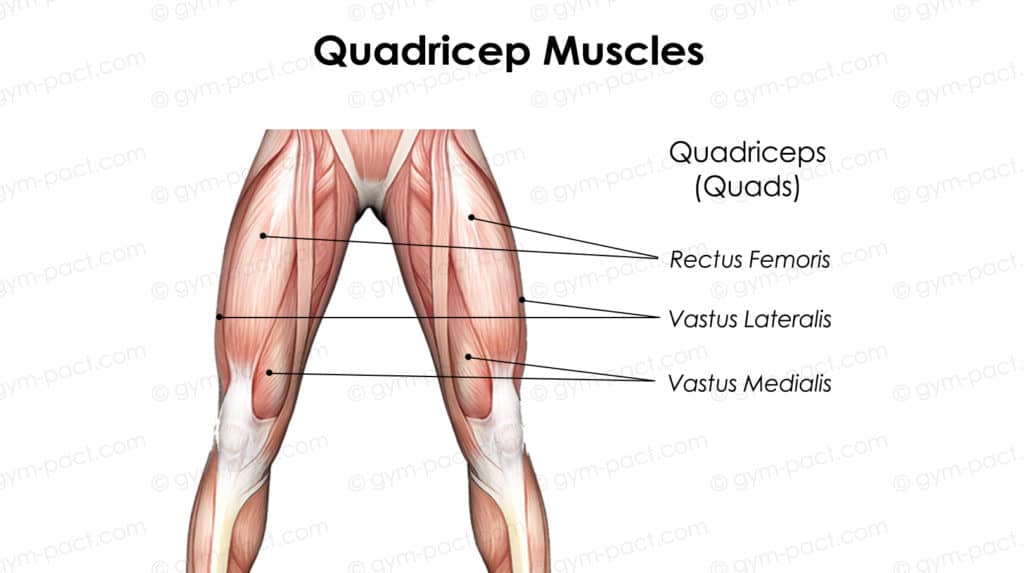
Primarily the three of the four muscle groups in the quadriceps are utilized during the leg extension. The first of the three is the “rectus femoris.” This is the muscle that is directly on top and smack bang in the middle. The second muscle used is the “vastus medialis,” which is also commonly known as the “teardrop.”
Finally, the “vastus lateralis” which sits on the front part of your leg, on the outside.
How To Do a Leg Press:
- Sit with your back flat against the back padding of the bench and your head and neck looking straight ahead.
- Use the pads to adjust their height; they should be comfortable on your shinbones; make sure your feet are pointing forward.
- Grab the handles on the side of the machine for support.
- Slowly extend your legs upwards in a controlled fashion making sure to keep the tension on the legs and not your feet or ankles.
- Do not lock-out your knees at the top of the movement.
- Return and repeat.
What To Do?
- It’s critically important to keep your back nice and straight against the back of the bench pad; this helps prevent injury and maintains the correct technique.
- Adjust the height of the pads so they rest flush on your shinbones: having the pads in the wrong position will cause pain and make the exercise extremely uncomfortable to complete
- Keep a slight bend in your knees at the top of the movement making sure not to lock out your knees.
- Keep your core engaged at all times throughout the movement: this helps prevent injury and takes the stress off the primary muscles.
What Not To Do?
- Do not arch your back when performing the leg extension: be sure to keep it flat against the bench pad.
- Do not lock your knees out.
- As with the leg press, leave your ego at the gym door, DO NOT lift heavy weights to impress others at the gym.
Who Is It For?
If you want to strengthen your quads, then the leg extension is the perfect movement for you. Because the leg press machine isolates your quads, the amount of blood flowing to them will create what we call “the pump.”
The leg press is an excellent machine for those who are just starting or those people returning from injury. Because the machine is locked in a controlled movement pattern, it allows beginners to control both the concentric and eccentric contractions.
Pros:
- An excellent movement for those looking for an effective leg warm-up movement which does not put added stress on the hamstrings and glutes.
- Perfect exercise for people who follow a three-day split as it allows back to back leg training.
- Perfect for people recovering from injury or undergoing rehabilitation.
- Ideal for beginners.
- An excellent movement that isolates the quadriceps.
Cons:
- Unnecessary stress on the knee joints.
- Limited range of motion.
- Does not utilize secondary muscle groups.
- Cant go heavy.
Conclusion
In my opinion, the leg press Vs. leg extension debate is one of the most heated among trainers, sports coaches, and sports scientists. The leg press, however, overwhelmingly is the exercise that gives increased positive benefits when compared to the leg extension.
Leg presses incorporate primary muscle groups and secondary groups, whereas the leg extension only focuses on the quadriceps. Leg presses work your quads, glutes, abs, and as such you can lift heavier; it stimulates natural testosterone and growth hormone levels.
The only significant negative factor to consider when using the leg press is the danger of locking out your knees during the movement.
The leg extension can put unnecessary stress on the knee joints, making it an exercise only for a select group of people, such as those undergoing rehabilitation, those beginning weight training who are using light weights, and finally, the elderly.
Frequently Asked Questions
Are Leg Extensions Really That Bad?
Here are a few things to consider if you are thinking about incorporating the leg extension into your training routine.
As with any exercise, it’s recommended to consult with your physical trainer or health care professional, particularly if you’ve suffered from knee pain previously.
Stop immediately if you feel any pain in the knees.
Start out using light weights.
Make sure your back is straight on the bench pad.
Do not lock-out your knees.
If you choose to incorporate the leg extension, be sure to integrate hamstring-strengthening movements like glute curls into your routine.
Are Leg Extensions Better Than Squats?
We refer to the leg extension as an “isolation movement,” with the quadriceps being the primary muscle isolated. Conversely, squats work several different muscle groups.
It’s not a matter of one exercise being better than the other; it’s more about which activity is right for you and what you are trying to achieve.
Leg Press Works What Muscles?
The leg press primarily focuses on the quadriceps muscle. Glutes and hamstrings are worked to a limited degree; this is due to the restricted hip flexion and extension the seated position allows.
